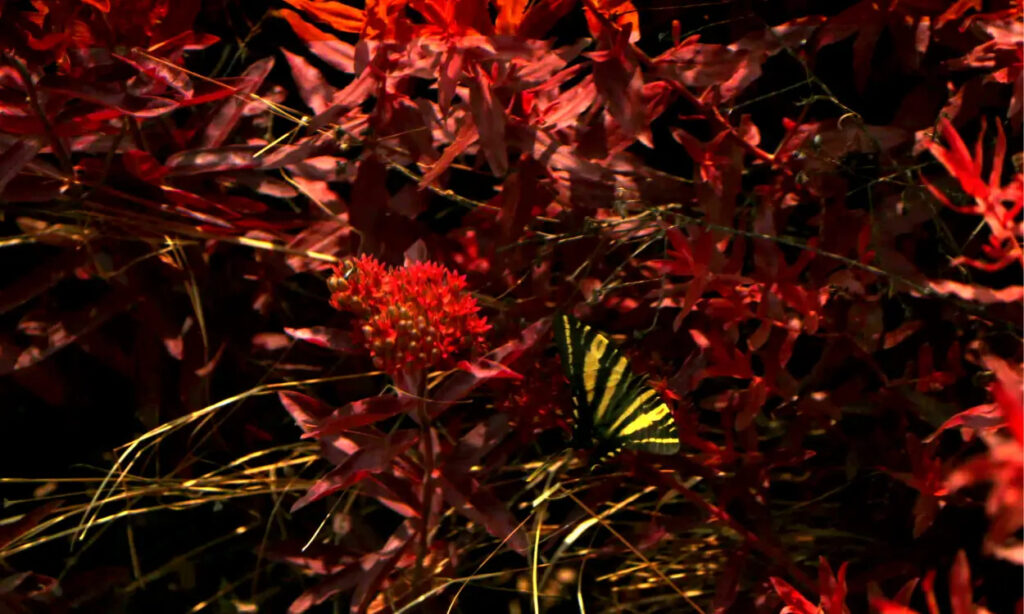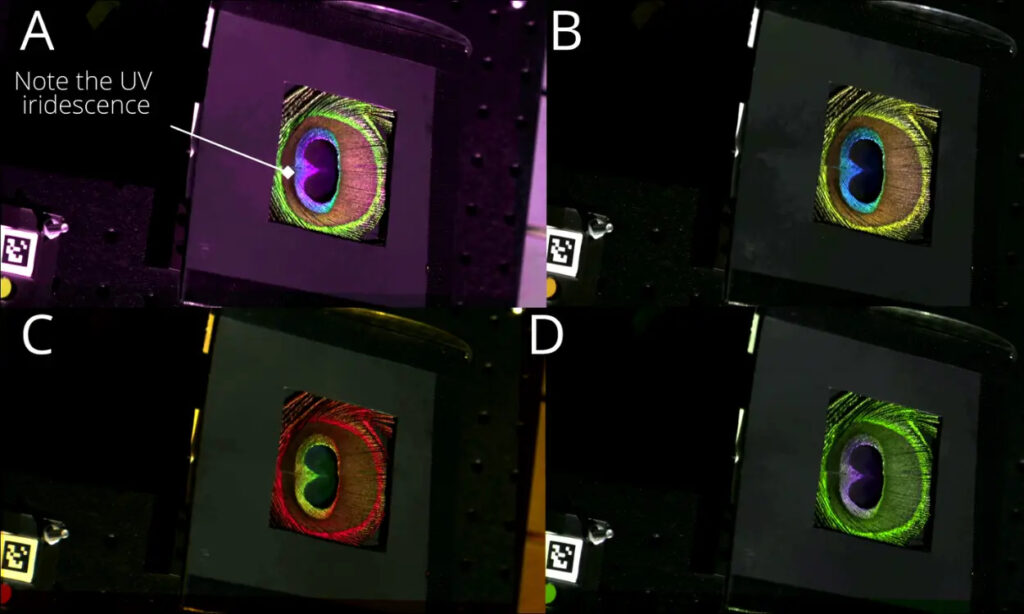
A collaborative effort involving researchers from the United States, the United Kingdom, and Canada has unveiled a novel method for showcasing how animals perceive the natural world. This achievement was made possible through the utilization of cutting-edge technology, incorporating a unique camera and software system.
The challenge in replicating the visual perspective of different animals lies in the variations of photoreceptors in their eyes. For instance, honeybees, while trichromatic like humans, perceive the world differently by being able to see UV light, a capability beyond human vision. On the other hand, birds, functioning as tetrachromats, also possess the ability to perceive UV light.
The curiosity about how animals perceive the world has long been a captivating inquiry, motivating researchers to devise this innovative technology and approach. The abstract of the research paper outlines its aim to “introduce hardware and software that provide ecologists and filmmakers the ability to accurately record animal-perceived colors in motion.”
Beyond its primary purpose, this research could have practical applications. It enables humans to see windows and decals from a bird’s perspective. In the United States alone, around 100 million birds face fatalities due to challenges in easily detecting mirrors, resulting in collisions.
This innovative camera technology captures videos across UV, red, blue, and green channels. The subsequent data from these channels undergoes processing using Python, providing insights into how various animals perceive the world.

In the accompanying image, four distinct color profiles are depicted. A represents a peafowl’s vision, B corresponds to human vision, C illustrates how honeybees perceive, and D showcases the vision of dogs. Each profile demonstrates how these different subjects view a peacock’s feather under natural lighting.
To validate the accuracy of this technology, the researchers conducted a comparison with spectrophotometry, a method measuring how different radiations interact with an object, including visible and ultraviolet light. Impressively, the newly developed visual technology demonstrated an accuracy rate exceeding 92%.
Understanding how animals perceive colors is crucial for various aspects of their lives, including food detection, hunting, and mate selection. This research, offered as an open resource, invites other researchers to further develop and enhance the technology’s applications.
Have you ever found yourself intrigued by the way animals perceive the world? Share your thoughts in the comments below!

0 Comments